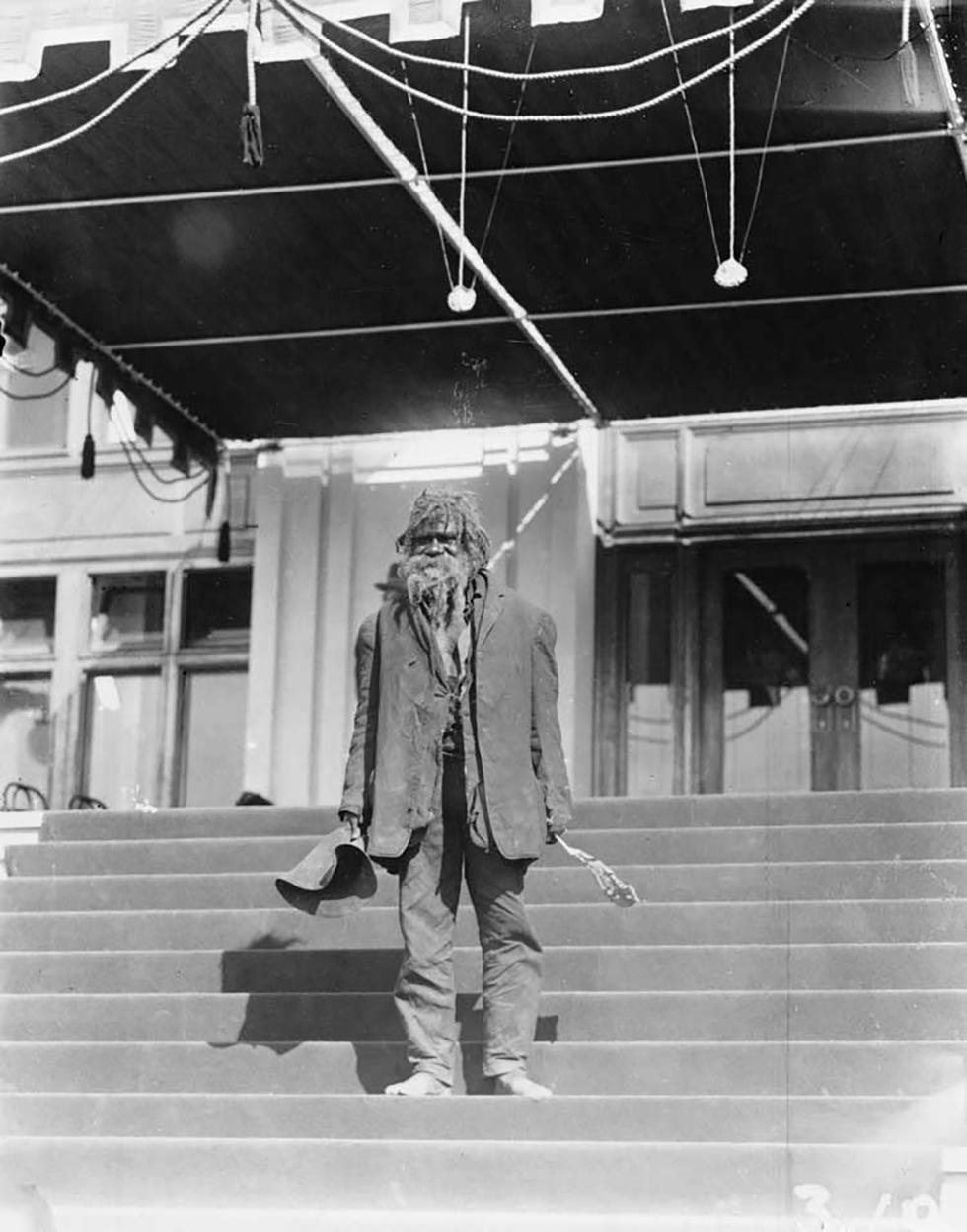


About the record
This is a black-and-white photograph of Aboriginal man Jimmy Clements (1847–1927), known as 'King Billy', standing outside (then) Parliament House in Canberra in 1927.
Educational value
- Depicts Jimmy Clements, a Wiradjuri elder from one of the largest tribal groups in Australia at the time of European contact; the Wiradjuri tribal boundaries probably ran south from Condobolin in New South Wales, including the areas of Wagga Wagga and Cootamundra, east to Gundagai and west along Billabong Creek, totalling an area of 97,100 square kilometres; the area incorporated many different local tribal groupings and probably included different dialect groups.
- Shows Jimmy Clements, or 'King Billy' as he was popularly known, standing outside Parliament House in Canberra in 1927 during the opening ceremony – 'King Billy' was one of only two Indigenous men (the other was John Noble, who was known as 'Marvellous' and was also a Wiradjuri tribal man) present at the opening of Parliament House in Canberra by the Duke and Duchess of York on 9 May 1927; King Billy walked from Brungle Mission near Tumut in NSW to appear uninvited at the opening ceremony in order to demonstrate what he later described in The Argus newspaper as 'his sovereign rights to the Federal Territory'.
- Indicates Australian Indigenous peoples' profound and continuing attachment to 'country' – Jimmy Clements's protest was a forerunner of significant Indigenous claims in the late 20th century, including the successful Mabo claim for ownership of the Murray Islands in the Torres Strait and a claim by the Wik peoples for ownership of their land on Cape York Peninsula in Queensland.
- Shows Jimmy Clements, possibly just before he was removed by police – the police tried to remove both Jimmy Clements and John Noble from Parliament House, arguing that they were inappropriately dressed, but both refused to leave; Aboriginal rights had been brought to the public's attention in the 1920s through the formation of organisations such as the Australian Aborigines Progressive Association, which was formed in Sydney in 1924.
- Depicts what is possibly the first recorded instance of Aboriginal protest at Parliament House in Canberra – since then, Parliament House has been famous for the Aboriginal Tent Embassy, which was erected on the lawn outside on Australia Day (26 January) in 1972 as part of Aboriginal protests about land rights, and Prime Minister William McMahon's statement that day that Aboriginal people need to demonstrate reasonable economic and social use of the land.
- Reveals part of the history of the Wiradjuri tribe in the development of Canberra, about which Aboriginal opinion is divided – the Australian Capital Territory government officially acknowledges the Canberra region as part of Ngunnawal (Ngunawal) territory and consults Ngunnawal groups; other Aborigines believe that Canberra is part of Wiradjuri land and that the Ngunnawal (Ngunawal) people are in fact Wiradjuri.
- Portrays Jimmy Clements' involvement in Aboriginal protest shortly before he died – Jimmy Clements died at the age of 80 only three months after the protest, on 28 August 1927 at Queanbeyan in NSW; however, his direct descendants, including Enid Freeman, Arinya Freeman, Calka Freeman and their children, are still directly involved in the Aboriginal Tent Embassy, which was erected in 1972 and which continues to protest for Aboriginal sovereignty.
- Implies that Jimmy Clements was better known by his nickname 'King Billy' than by his own name – several photographs that appeared in contemporary newspapers recorded both Jimmy Clements and John Noble as being 'King Billy', suggesting that newspapers and public perceptions of Aboriginal people in 1927 could be demeaning and careless.
Acknowledgments
Learning resource text © Education Services Australia Limited and the National Archives of Australia 2010.
Related themes
Need help with your research?
Learn how to interpret primary sources, use our collection and more.






